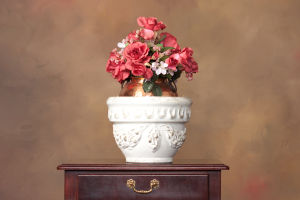As the core piece of furniture in the living room, the shape of the sofa plays a vital role in the layout, function, and visual effect of the entire space.
Choosing the right sofa can enhance both the comfort and practicality of the living space, while also reflecting the owner's taste and home style.
Different sofa shapes suit different spaces and needs. The key is to make a wise choice based on the characteristics of the room and personal preferences.
When choosing a sofa, the size and layout of the room should be considered first. Larger rooms can usually accommodate bigger sofas, such as curved or L-shaped sofas, which provide more seating and fill the space, creating visual balance.
In small apartments or compact living rooms, a straight-line or modular sofa may be a better choice. This type of sofa saves space and allows for flexible layout adjustments as needed. A reasonable choice of sofa shape and size can effectively improve space efficiency and make the room appear more organized.
The curved sofa is popular for its elegant lines and smooth shape. Its design breaks the straight lines of traditional sofas, adding a soft and modern visual effect to the space. The curved sofa is suitable for larger living rooms, particularly those with open layouts.
It is often placed in the center of the room, becoming the visual focal point of the living space. This type of sofa is not only suited for home decor but is also commonly found in hotel lobbies or high-end reception rooms, emphasizing the elegance and style of the space.
To maintain consistency in design, curved sofas are typically paired with round or oval furniture, such as round coffee tables or streamlined lamps, which enhance the fluidity and harmony of the room.
Modular sofas are highly favored by young families for their flexible design. This type of sofa consists of multiple independent units that can be freely arranged and rearranged according to the user's needs, offering a variety of possibilities.
Modular sofas are suitable for rooms of any size, especially for those who enjoy changing their home layout frequently. Their versatility allows homeowners to adjust the sofa's shape to fit different occasions, transforming it from a standard straight-line configuration into an L-shape or U-shape, which is both practical and creative.
When choosing a modular sofa, simple-style furniture pairs best, as overly complex or exaggerated designs may conflict with the sofa's flexible nature and disrupt the overall visual balance.
The straight-line sofa is a classic design. Its simple, straight form fits well with most traditional and modern home styles. Whether placed against a wall or by a window, it saves space while providing ample seating. For families who prefer symmetrical designs, a straight-line sofa is an ideal choice.
Paired with a long, rectangular coffee table, symmetrical side tables, or a floor lamp, it creates a neat and harmonious layout. Additionally, adding colorful pillows to a straight-line sofa can break the monotony of straight lines, injecting vibrancy and warmth into the space.
The cloud sofa, named for its extreme comfort and soft texture, is beloved by families seeking a relaxing atmosphere. Sitting on a cloud sofa feels like being enveloped in a soft, cushy cloud, making it perfect for a home theater or relaxation area.
Due to its unique design, the cloud sofa pairs best with soft, rounded furniture, such as organic-shaped coffee tables and plush rugs, to avoid harsh lines that would disrupt the overall softness. This cozy and relaxing atmosphere makes it ideal for family members to unwind and rest.
Each sofa shape has its unique functions and design characteristics, catering to different spaces and living needs. When buying a sofa, consider the room layout, available space, personal lifestyle, and family habits.
By carefully weighing these aspects, you can find the ideal sofa that not only aligns with your aesthetic preferences but also meets your practical needs.


